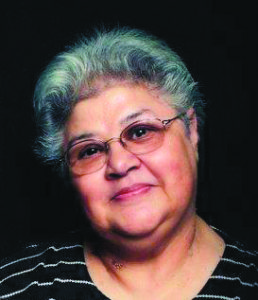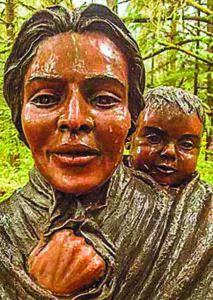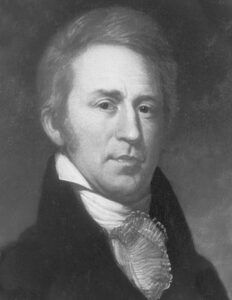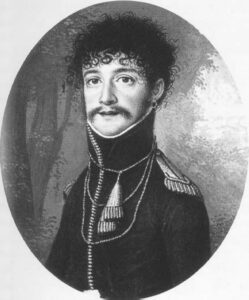

When Lewis and Clark arrived in the Hidatsa-Mandan territory in October 1804, they hired French trapper Toussaint Charbonneau and his pregnant Shoshone wife Sacagawea as interpreters for their expedition.
Wintering at Fort Mandan, on February 11, 1805, Lewis recorded the birth of Jean Baptiste: “About five Oclock this evening one of the wives of Charbonneau was delivered of a fine boy. It is worthy of remark that this was the first child this woman had boarn, and as common in such cases her labour was tedious and the pain violent.”
Over the course of the two-year journey, baby Baptiste won the hearts of the rough men of the corps. Captain Clark called him “Pompy, my little dancing boy.” But the rest of the story of the youngest member of the Corp of Discovery has been largely untold.
During the return trip from Oregon, Clark led a small detachment that included the Charbonneau family, to explore the Yellowstone River. On July 25, 1806, they came upon an unusual, free standing sandstone formation on the south shore of the river that Captain Clark named “Pompy’s Tower” after the one-and-a-half year-old Jean Baptiste. Under a protected, natural over-hang, Clark etched his own name and the July 25 date, his birthday. Clark’s etching, now preserved under an unbreakable glass shield, is considered the only lasting physical evidence that the Corps left on the landscape during the journey.


After the expedition, Clark wrote to Toussaint: “As to your little Son (my boy Pomp) you well know my fondness for him and my anxiety to take and raise him as my own child. I once more tell you if you will bring your son Baptiest to me I will educate him and treat him as my own child–I do not forget the promis which I made to you and Shall now repeet them that you may be certain–Charbono, if you wish to live with the white people, and will come to me, I will give you a piece of land and furnish you with horses, cows, & hogs…Wishing you and your family great suckcess & with anxious expectations of seeing my little dancing boy Baptiest I shall remain your friend.”
In 1809, Toussaint Charbonneau and Sacagawea traveled down the Missouri to St. Louis with Jean Baptiste. Toussaint, together with all of the expedition’s enlisted men, received land warrants in the amount of 320 acres. This, plus the voucher for $533.33, paid for their interpreting services. Toussaint was not a farmer, however, and on March 26, 1811, he transferred his land title to Clark for $100.00. In April, he and Sacagawea boarded a Missouri Fur Company barge bound for the upper Missouri country, leaving Baptiste in Clark’s charge so that the boy could commence his education.
While living in St. Louis, Pomp received the best education money could buy. Unlike most Indian boys of the time, Pomp was taught to read and write in English, and to read classical Greek and Latin.
Upon completing his schooling in St. Louis, Baptiste returned to frontier life. In 1823 at age 18, while living in a traders’ village at the mouth of the Kansas River, he met Prince Paul Wilhelm of Wuertemberg, Germany, who was on a scientific mission to America. Baptiste’s unusual combination of frontier skills and cultural attainment intrigued the prince, who took him under his patronage. With Clark’s permission, the fur trader’s son and his the royal traveler took passage on December 21, 1823 on the three-masted barkantine Smyrna from New Orleans to Havre de Grace, France, where they docked on February 14, 1824.
Baptiste enjoyed the royal lifestyle for six years, becoming fluent in German, Spanish and Italian, and gaining a background that later would mark him as a cultural anomaly on the western frontier. At one gathering, Pomp played the violin for Ludwig van Beethoven.
In Part 2 of this series, we will learn more about the adventures of Jean Baptiste Charbonneau’s adult life.
No Comments
Leave a comment Cancel